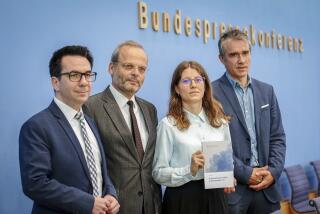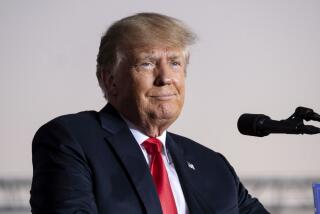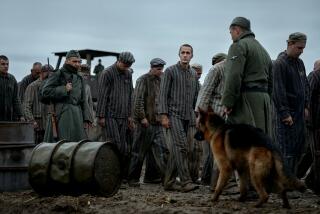Amid a Wave of Racist Violence, a Holocaust History Lesson
WEIMAR, Germany — With almost nightly outbreaks of right-wing violence, such as the recently shattered storefront of the China-Imbiss restaurant in this eastern city, reunified Germany’s first prime-time documentary on the Holocaust couldn’t have come at a more propitious time.
The six-part series that began this week on ZDF public television weaves together eyewitness accounts of those who survived Nazi concentration camps and mass executions and presents harrowing film footage long locked away in the archives of Eastern European countries.
Even the series’ name, “Holokaust,” reflects a more direct confrontation of this society with its atrocious past, giving a German spelling to the name given by foreign historians to the systematic extermination of 6 million European Jews.
“The spelling of Holokaust is in itself a symbolic act of appropriating our own history,” said Eberhard Jaeckel, a historian who advised the ZDF producers of the series, which will be made available to schools and libraries after its six-week run.
While educators and analysts applaud the efforts to remind young Germans--or in the case of many eastern youths, to inform them for the first time--of the savagery unleashed on the continent by fellow Germans, the documentary seems to many to be too little, too late.
Germany’s Interior Ministry, which is seeking a ban on far-right political parties, reported 1,112 right-wing incidents in August, the latest month for which statistics are available, compared with an average of 668 a month over the rest of this year.
The angry, marginalized youths suspected of lobbying firebombs at Jewish places of worship or harassing dark-skinned foreigners are not likely to tune in to the Tuesday night ZDF segments.
Series producer Guido Knopp noted that recent public opinion surveys in Germany suggest that as many as two-thirds of German youths know little or nothing about the crimes of the Third Reich.
“This series is a historic project for Germany. It strikes a blow against suppression and lies,” he told journalists at a preview of the series.
Despite its prime-time airing, the first segment of “Holokaust” drew fewer than 3 million viewers, or less than 10% of the TV audience for that time slot, conceded Friedrich Scherer, ZDF editor for historical productions.
Still, the ZDF series has the backing of Nazi-hunter Simon Wiesenthal and engaged some of German television’s most respected producers. The 45-minute segments draw on the accounts of more than 500 people, from Jews who escaped the Nazi horror to remorseful Wehrmacht soldiers and officers making public disclosure for the first time.
“When one wants to find a means of showing this history on television, especially in prime time, and in schools, this can only be described as desirable,” said Paul Spiegel, head of the Central Council of Jews in Germany.
Spiegel has recently called on the German government and the obvious majority of Germans who reject xenophobia to show their contempt for such base acts of intolerance. He has even recently questioned whether it was wise to have rebuilt the post-World War II Jewish community here from fewer than 30,000 a decade ago to nearly 100,000 today, in view of the residual anti-Semitism in German society.
But the government of Chancellor Gerhard Schroeder has responded to the recent violence with a call for an “uprising of the upright” to show that the right-wing radicals are both a small minority and powerless to overwhelm the right-thinking masses.
“There is no logical explanation for these outbreaks of anti-foreigner violence. Many of these kids have never even seen a foreigner,” said Reiner Bensch, a higher education official in this city where post-World War I poverty gave rise to the Nazi era. “It’s a lack of education about the crimes of the Nazis that only time and attention will overcome.”
More to Read
Sign up for Essential California
The most important California stories and recommendations in your inbox every morning.
You may occasionally receive promotional content from the Los Angeles Times.











